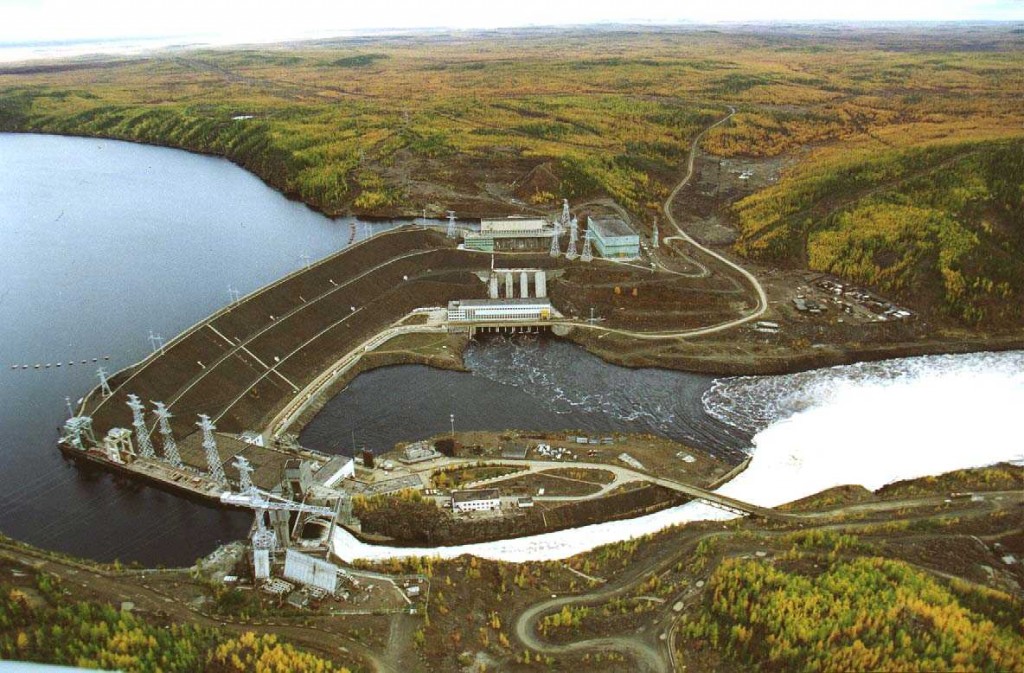
Since the very first opening of electric hydropower plants in Europe near Šibenik in Croatia and the peak of industrial revolution in the beginning of the 20th century, many big hydropower plants were opened around the world. Big projects like the hydropower plants at Lake Michigan, the Niagara Waterfalls or the Wolga River were realized and established the base for the new status of wealth in the modern society replacing steam-/ and oil-powered motors. The hydropower plants became symbols of technical progress enlightening metropoles like caves in the dark and parallely securing these cities from big fires caused by regularly used private petroleum laps or gas-runed streetlights. These technical cathedrals were a rebirth of the watermills form ancient times and transmitted the energy for new mass media like the radio, telegraphy, telephones and later on the television. Not least they became fundamental instruments of politics and a fashion people understand the world.
In eastern bloc states like Bulgaria, with a Moscow friendly leadership during socialist times, well organized education with new obtained possibilities for usual people like farmers or shepherds to participate in the plans to establish a fairer world society helped to transfer knowledge and group dynamics to build hydropower plants also through scholar and student exchange programs like for example todays called “ERASMUS” project. Together with the motivation transmitted through music and positive censored, on progress focused media it was easy to find freewill worker and usual worker getting payed solid salaries for the construction of immense dams which were necessary in lowland or semiarid areas on rivers with nival regimes to guarantee constant high pressure and flow rates for the redesigned high voltage generators.
New possibilities of effective electric AC (Alternating Current) energy transmission with much lower energy loss rates discovered by Nikola Tesla an engineer with comparable characteristics of the ancient Greek mythologic person of Prometheus from the Balkans living in New York who opened relief energy to humanity transferred by strong current rivers form high mountain ranges, which are usually further away from growing cities with huge needs for electricity. So it came in order to bring wealth and electricity in Lenin’s words “peace, bread and electricity” to the people, also in the People’s Republic of Bulgaria, traditionally in 5 year plans organized by the communist orientated governments, were opened first bigger hydropower plants during the more then 30 years rulership of Todor Zhivkov in high mountain ranges like the Rhodophes, Stara Planina and the Rila Mountains around the 1950′.
Still today the main renewable energy supply and storage in Bulgaria is based on these hydropower plants with about 12 % [1] of the total consumed electricity in the country. As dams have a huge impact on the surrounding areas it is interesting to me how these flooded areas are doing microclimaticly and if these power plants have never the less the smallest impact and biggest effectivity compared to the hydrothermal potential of Bulgaria’s geology for example. Thus you are going to read more about the research to these questions in blog articles here.
[1] https://www.irena.org/IRENADocuments/Statistical_Profiles/Europe/Bulgaria_Europe_RE_SP.pdf
Map showing all bigger hydropower plants in southern Bulgaria especially the Rila and Rhodope Mountains:
CC Nikita Baylukov
Mapdata Source: https://nek.bg
Overview map Bulgaria physic
Source: Wikipedia commons

Bulgaria’s hydropower exploitation compared to other European countries:
https://www.hydropower.org/region-profiles/europe
Bulgaria’s renewable energy output compared to other European countries:
https://ec.europa.eu/eurostat/databrowser/view/nrg_ind_ured/default/map?lang=en
Governmental statistics:
https://www.nsi.bg/en/content/4201/renewables
Balkan HP Map and Plans:
https://balkanrivers.net/en/map
List of all ~223 HPPs in Bulgaria
https://dams.reki.bg/Dams/List?action=browse
Riverbypass hopper technique, gaining the relief energy by letting the stream, sediments and fish flow in a spiral, possibility to reuse surface mines in water supplied positions:

